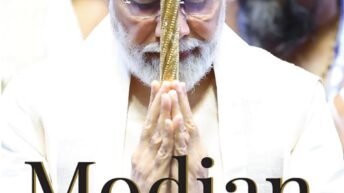|
Listen to article
Getting your Trinity Audio player ready...
|

The posts of Delhi Chief Minister, Delhi Legislative Assembly and Delhi Government could possibly be void ab initio despite being created by Parliament through a constitutional amendment because the framers of the Constitution had decided that Delhi being the national capital shall be centrally-controlled and administered.
Constitutional expert and former Secretary of Lok Sabha and Delhi Assembly, S. K. Sharma believes that the Indian Parliament erroneously overturned this wisdom because of lacuna in the constitutional record on account of serious differences in the Constituent Assembly over the future of Delhi.
In a fascinating account (Bhimrao Ramji Ambedkar: Arbiter Of Delhi’s Destiny), Sharma reveals that the Constituent Assembly discussed Delhi in two Committees. Following a Resolution moved by Deshbandhu Gupta, a specially constituted Committee was set up under Dr. B. Pattabhi Sitaramayya. It recommended provincial autonomy and self-government in Delhi. This was supported by veterans such as Mahavir Tyagi, R.K. Sidhwa, Deshbandhu Gupta, Pattabhi Sitaramayya, and others. Dr. Rajendra Prasad received this Report on October 21, 1947, but did not place it before the Constituent Assembly owing to fierce opposition from several members, including Jawaharlal Nehru, Vallabhbhai Patel, and C. Rajagopalachari.
The second Committee was the Constitution Drafting Committee headed by Dr. B.R. Ambedkar. It suggested that Delhi being the national capital could not be placed under a local administration and opposed autonomy or Statehood.
Nehru, Patel, Ambedkar and Rajaji were unwilling to yield control over Delhi as India’s capital. Ambedkar got a study conducted about practices in other federations; it found that there is not a single federal country in the world that does not exercise exclusive Legislative authority over its Capital.
There were sharp differences over the administration and control of Delhi. Eventually, Ambedkar’s team needed the Pattabhi Sitaramayya Committee Report to finalize Chapter 8 of the Constitution which contained clauses dealing with Centrally Administered Provinces. Rajendra Prasad asked Ambedkar to find a viable solution. The archival record in this respect is somewhat murky, but Sharma being a veteran of the constitutional process, has pieced together a credible account from deep scrutiny of the archives.
On July 24, 1949, Ambedkar summoned S.N. Mukherjee, Head of the Drafting Committee Secretariat, and directed him to fix an urgent meeting of the Drafting Committee to be held on July 25, 1949, at the official residence of Sardar Patel (1 Aurangzeb Road). Prime Minister Jawaharlal Nehru and Home Minister Vallabhbhai Patel were to be formally invited to this meeting as special invitees. The agenda was “to consider the constitutional provisions relating to the Chief Commissioner Provinces”. Ambedkar advised discretion regarding the meeting and that verbatim minutes thereof should not be recorded/circulated.
Thereafter, the Drafting Committee met as usual on July 25, 1949, at 10 a.m., in the Constitution Hall of Parliament to consider amendments to the Draft Constitution in the light of previous discussions. Later, at 3 p.m. the same day, it met at Patel’s residence to consider the provisions relating to the Centrally Administered Areas.
With two prominent non-members (Nehru and Patel) attending this confidential meeting of the Drafting Committee, it virtually became a joint meeting of the Constituent Assembly and the Government of India. This enabled Ambedkar to achieve the desired objectives.
The Drafting Committee now unanimously rejected the proposition that Delhi be made a State and disagreed with the recommendations of the Pattabhi Sitaramayya Committee. It proposed that Delhi should be directly administered by the President through a Lt. Governor; and that the President of India should have the power to create by order a local legislature with such duties and functions as may be specified therein.
As this meeting was kept confidential and its minutes were not tabled or circulated, successive parliaments and central governments have remained ignorant of this decision and the reasons thereof. But the decisions taken in this meeting were implemented in independent India.
Further, Ambedkar did not immediately send the conclusions of this Drafting Committee meeting (July 25, 1949, at Patel’s residence) to the President of the Constituent Assembly, but waited for an opportune moment. The opportunity came when the final draft of the Constitution was ready.
In early November 1949, Ambedkar sent the final draft of the Constitution “as settled by the Drafting Committee” to the President of the Constituent Assembly. He also annexed a copy of the Report which contained comments on various aspects of his Draft Constitution, Chapter-wise, along with the recommendations of the Drafting Committee on Delhi. The latter was inserted under the chapter heading “Centrally Administered Areas”. Hence it went unnoticed and failed to draw the instant attention of the Members.
Thus, a majority of the members of the Constituent Assembly remained ignorant of the recommendations of the Drafting Committee on Delhi’s future setup. Ambedkar’s Report contained the following relevant para regarding Delhi:
“So far as Delhi is concerned, it seems to us that as the Capital of India it can hardly be placed under a local administration. In the United States, Congress exercises exclusive Legislative power in respect of the seat of Government; so too in Australia. No sufficient reasons for departing from these precedents appear in the (Pattabhi Sitaramayya) Committee’s Report. We have, therefore, come to the conclusion that a somewhat different plan is desirable. Accordingly, we have proposed in the draft (Constitution) that these Central areas (including Delhi) may be administered by the Government of India either through a Chief Commissioner or a Lt. Governor….
“What is to be done in the case of a particular area is left to the President to prescribe by order. He will of course in this as in other matters, act on the advice of responsible Ministers. He may, if he chooses, have an Lt. Governor in Delhi. He may also by order create a local Legislature and provide for its Constitution and its powers. This seems to us to be a flexible plan which can be adjusted to the diverse requirements of the areas concerned.”
The draft Constitution as finally settled, embodied the spirit and substance of the aforesaid recommendations. The Constituent Assembly adopted the Constitution on November 26, 1949, and it came into effect on 26 January 1950. Delhi became a Territory of the Union. Sharma emphasises that Delhi was never intended to have institutions such as Legislative Assembly, Government and Chief Minister.
Later, during the debate on the Government of Part ‘C’ States Bill, 1951, Rajaji as Home Minister explained that the safeguards provided in the Bill regarding Delhi (i.e., keeping subjects such as Police, public order, municipal functions, etc. outside the preview of Delhi State Assembly), are not enough, “We want positive authority. The Constitution rightly lays it down that administrative discipline goes with Legislative authority … and must be kept with the Central Government. … If Parliament does not agree and if the administration is to be handed over to a local government, despite all the attractions of Delhi, I have no doubt in my mind at all that, after sometime, the central Government of India will have to migrate to some other place and not remain under this administration.”
Sharma concludes that the Constitution (Sixty-Ninth Amendment) Act, 1991, which inserted a new Article 239 AA in the Constitution and created three new institutions in Delhi, namely, Legislative Assembly, CM post and Government of Delhi, is contrary to the considered opinion of the national leadership of the time. This change was made of the basis of a report by a committee headed by a retired bureaucrat, S. Balakrishnan (1987-89). Delhi Statehood is an aberration that has crept into the Constitution and needs to be reconsidered.






Add comment